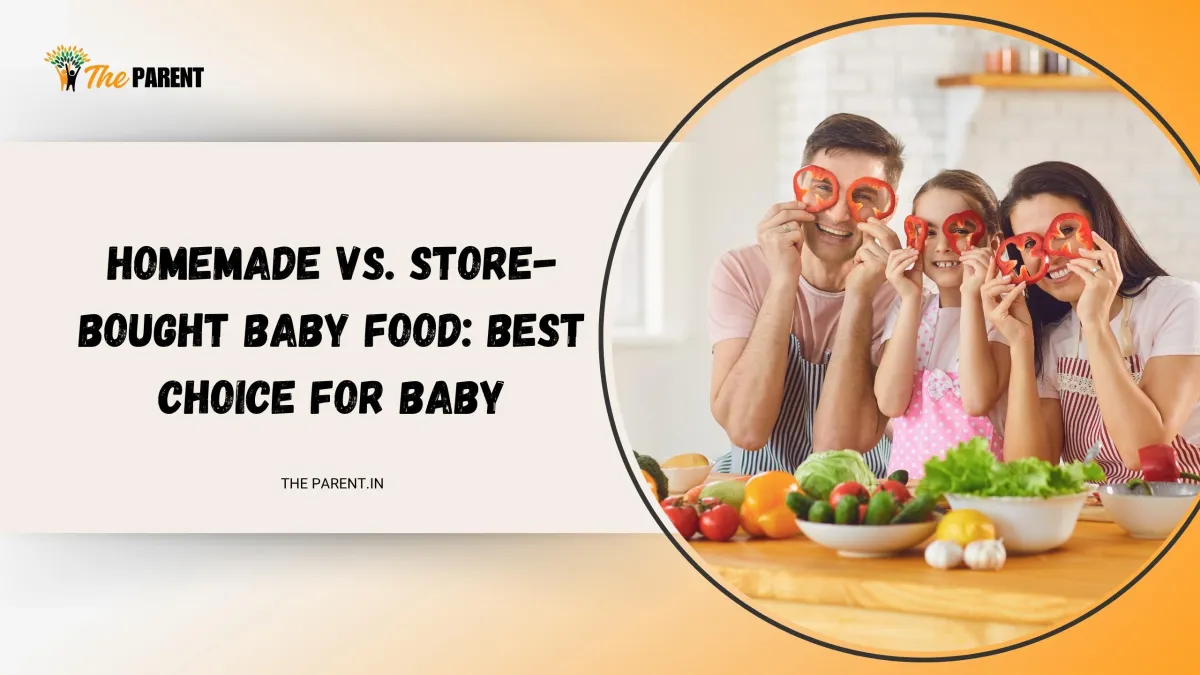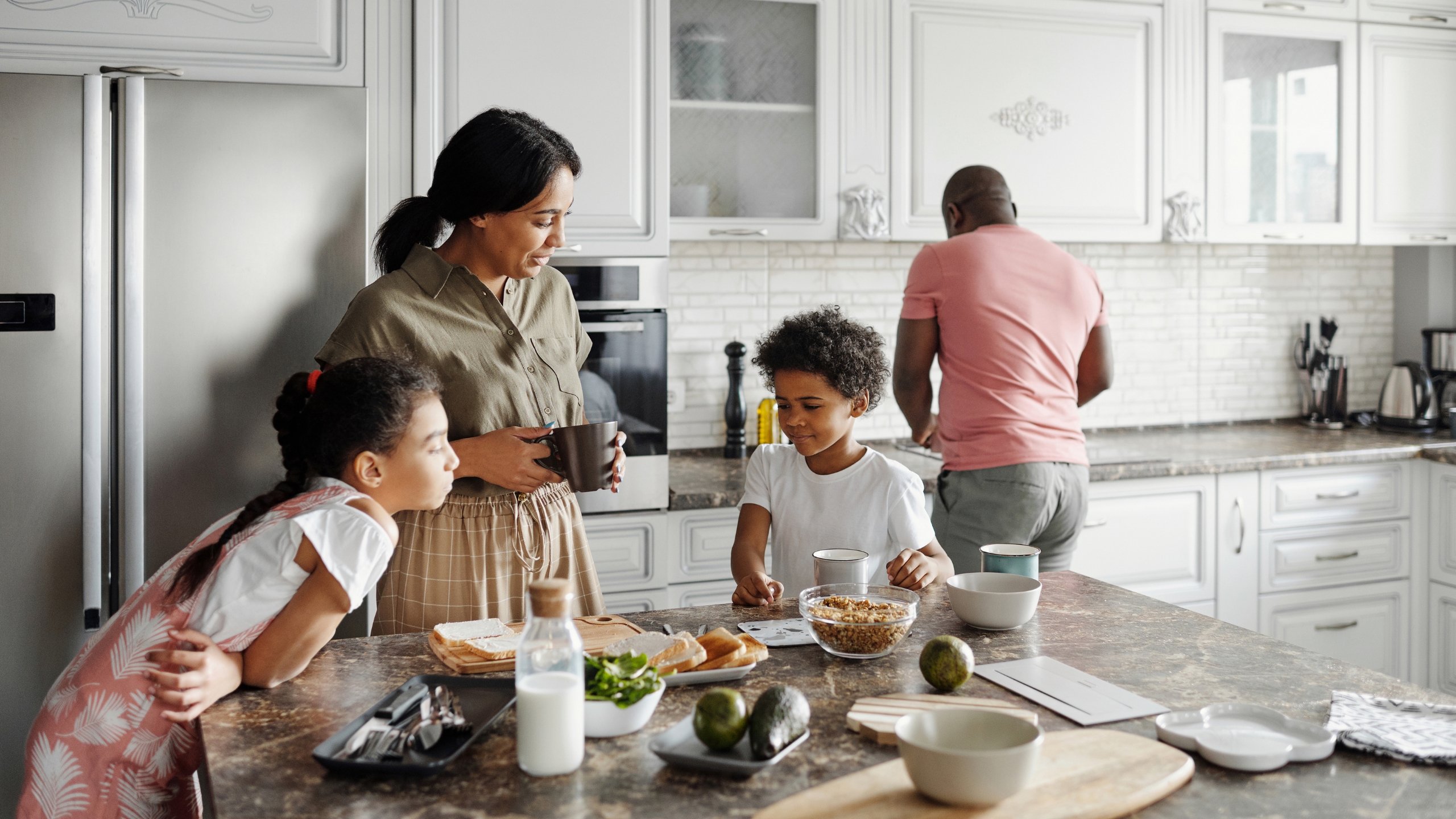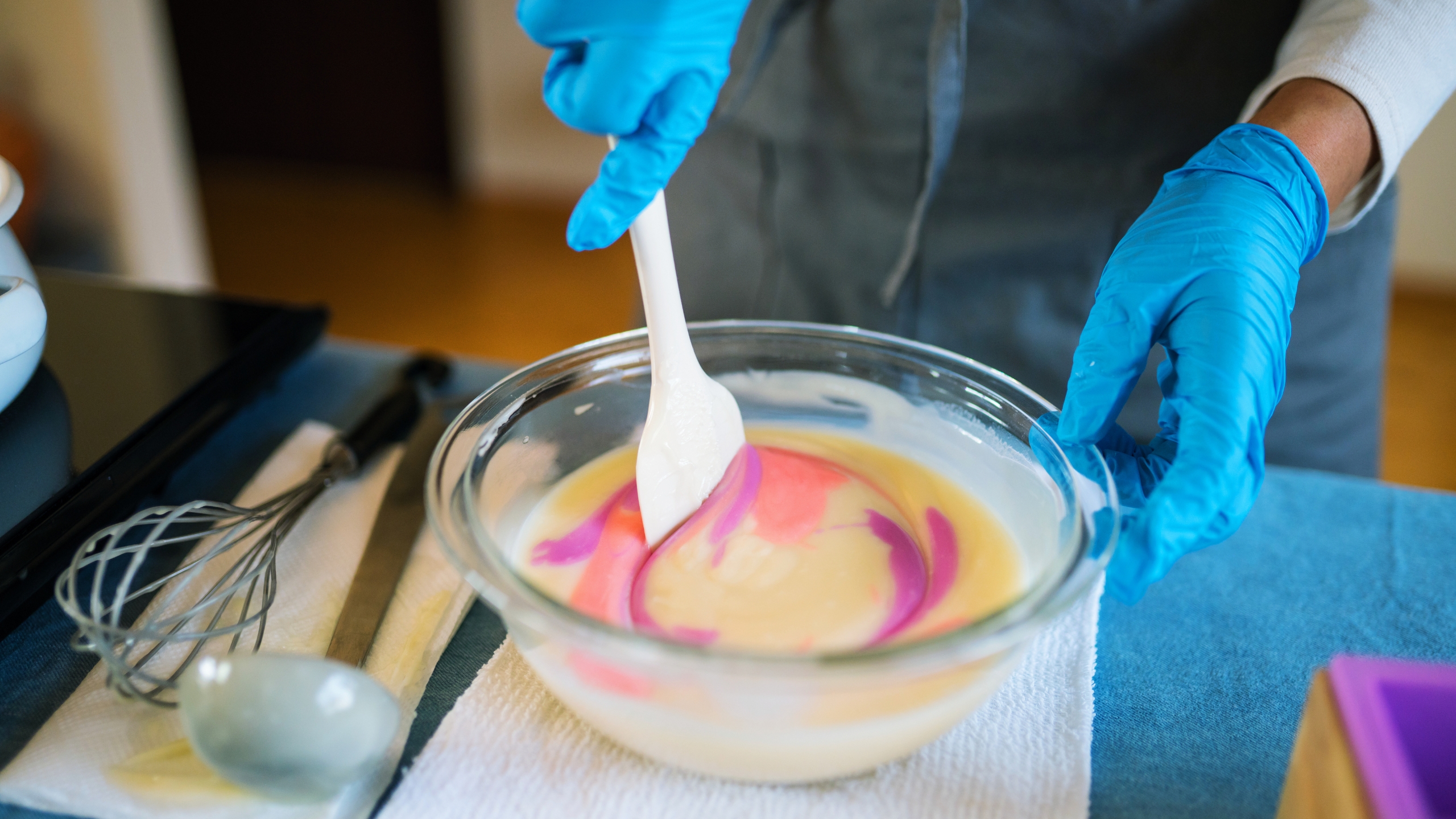
Homemade vs. Store-Bought Baby Food: Best Choice for Baby
As a new parent, you want the best for your baby, especially when it comes to their first foods. The debate between homemade vs. store-bought baby food is one every parent faces. Should you blend fresh purees in your kitchen or grab convenient jars from the grocery store? Each option has its perks, but which one truly supports your baby’s health, your budget, and your busy schedule?
Having navigated this choice for my own kids and advised countless parents through my work as a nutrition enthusiast, I’ve seen both sides up close.
Also Read👉 Parenting Gen Alpha: Challenges & Trends in 2025
we’ll compare homemade and store-bought baby food across four key factors-nutritional value, convenience, safety, and cost to help you make an informed decision. With real-world examples, stats, and practical tips, you’ll feel confident choosing what’s best for your little one in 2025. Let’s dive in!
Why Choosing the Right Baby Food Matters
Your baby’s early diet lays the foundation for their growth and development. According to the American Academy of Pediatrics (AAP), babies need nutrient-rich foods starting around 6 months to support brain development, immunity, and overall health. A 2024 study by the CDC found that 60% of parents introduce solids by this age, making the homemade vs. store-bought decision critical.
Both options can meet your baby’s needs, but they differ in ways that impact your family’s lifestyle and values. Let’s break it down by comparing nutritional value, convenience, safety, and cost.
1. Nutritional Value: Which Packs the Healthiest Punch?
Homemade Baby Food
Making baby food at home lets you control every ingredient. You can choose fresh, organic produce and tailor recipes to your baby’s needs, ensuring no added sugars, salts, or preservatives. For example, pureeing steamed sweet potatoes with a splash of breast milk offers a nutrient-dense meal packed with beta-carotene and fiber.
Pros:
High nutrient retention if prepared fresh (steaming preserves 90% of vitamins, per a 2024 Nutrition Journal study).
Customizable for allergies or dietary preferences (e.g., gluten-free or vegan).
Full control over ingredient quality.
Cons:
Nutrient loss if overcooked or stored too long.
Requires knowledge of balanced nutrition to meet baby’s needs.
Example: When my daughter started solids, I blended avocado and banana for a creamy, nutrient-rich puree. It was fresh, free of additives, and tailored to her love for mild flavors.

Store-Bought Baby Food
Commercial baby foods are formulated to meet nutritional standards set by the FDA. Brands like Gerber and Earth’s Best use high-quality ingredients, often fortified with vitamins like iron or DHA. However, some contain fillers or added sugars, especially in flavored pouches.
Pros:
Consistent nutrition, often fortified for brain and bone health.
Shelf-stable, preserving nutrients for months.
Tested for developmental appropriateness (e.g., stage 1 purees for 6-month-olds).
Cons:
Some brands add preservatives or sweeteners (check labels for “added sugar”).
Less variety in flavors compared to homemade.
Example: A friend relied on Earth’s Best organic pouches for her son’s meals on busy days. The fortified iron supported his growth, but she avoided sugary “dessert” blends.
Verdict: Homemade wins for customization and freshness, but store-bought offers consistent, fortified nutrition. Read labels carefully and consult a pediatrician for dietary balance.
2. Convenience: Which Fits Your Busy Life?
Homemade Baby Food
Preparing homemade baby food requires time and effort. You’ll need to shop, cook, blend, and store, which can feel overwhelming for busy parents. A 2025 Parenting.com survey found that 55% of parents cite time as their biggest barrier to homemade food.
Pros:
Batch cooking saves time (make a week’s worth in one session).
Use everyday kitchen tools like blenders or food processors.
Cons:
Time-intensive prep, especially without a system.
Requires planning to ensure fresh ingredients.
Example: I’d spend Sunday afternoons steaming and pureeing veggies for my son, freezing portions in ice cube trays. It saved time during the week but took a few hours upfront.
Store-Bought Baby Food
Store-bought options are the ultimate time-saver. Grab a jar or pouch, and you’re done-no cooking required. This is ideal for travel, daycare, or hectic schedules.
Pros:
Ready-to-eat with no prep or cleanup.
Portable pouches fit easily in diaper bags.
Long shelf life (up to 2 years for unopened jars).
Cons:
Less control over flavor variety.
Recyclable packaging is improving, but waste adds up.
Example: A coworker kept Gerber pouches in her car for quick meals during her daughter’s soccer practice, making busy evenings stress-free.
Verdict: Store-bought wins for convenience, especially for on-the-go parents. Homemade can work with batch prep but demands more time.
3. Safety: Which Is Safer for Your Baby?
Homemade Baby Food
Home preparation gives you control over hygiene and ingredients, but it comes with risks if not done carefully. The AAP stresses proper food handling to avoid contamination.
Pros:
No risk of commercial processing errors.
Avoid allergens by selecting safe ingredients.
Cons:
Risk of bacterial contamination if not cooked or stored properly (e.g., listeria in undercooked veggies).
Requires careful storage (refrigerate for 48 hours or freeze for up to 3 months).
Example: A mom in my parenting group learned to sterilize her blender and store purees in airtight containers after a batch spoiled too quickly.
Store-Bought Baby Food
Commercial baby foods undergo rigorous safety testing to meet FDA standards. However, recalls do happen—2024 saw recalls of certain brands due to heavy metal concerns, per Consumer Reports.
Pros:
Strict safety protocols and testing reduce contamination risks.
Clear labeling for allergens and expiration dates.
Cons:
Rare recalls for metals like lead or arsenic (check FDA alerts).
Packaging issues (e.g., damaged jars) require inspection.
Example: A friend switched to Plum Organics after a recall scare, appreciating their transparent testing reports online.
Verdict: Store-bought edges out for consistent safety standards, but homemade is safe with proper hygiene and storage practices.
4. Cost: Which Saves You Money?
Homemade Baby Food
Making your own baby food can be budget-friendly, especially if you buy in-season produce or use leftovers. A 2025 USDA report estimates homemade purees cost $0.50–$1 per 4-ounce serving.
Pros:
Cheaper with bulk buying (e.g., $2 for a pound of sweet potatoes makes 8 servings).
Use household staples like apples or carrots.
Cons:
Upfront costs for equipment (e.g., $50 blender).
Time investment adds indirect costs.
Example: I saved $20 a month by pureeing farmers’ market veggies instead of buying jars, though it took an hour of prep weekly.
Store-Bought Baby Food
Commercial baby food is pricier, with organic jars or pouches costing $1–$2 per 4-ounce serving, per 2025 grocery data. Subscriptions like Yumi can lower costs but still add up.
Pros:
No equipment or prep costs.
Subscription services offer discounts (e.g., 10% off with Little Spoon).
Cons:
Ongoing expenses, especially for organic or premium brands.
Frequent purchases for growing babies.
Example: A colleague spent $80 monthly on organic pouches for her twins, nearly double the cost of homemade.
Verdict: Homemade is more cost-effective, especially with bulk prep. Store-bought suits those prioritizing convenience over budget.
Tips for Choosing What’s Best for Your Baby

No one-size-fits-all answer exists, but these tips can guide your decision:
Blend Both Approaches: Use homemade for home meals and store-bought for travel. A 2025 BabyCenter poll found 45% of parents mix both.
Read Labels: For store-bought, choose brands with no added sugars or fillers. Look for USDA Organic or Non-GMO labels.
Batch Prep for Homemade: Freeze portions in silicone trays to save time. Use within 3 months for best quality.
Consult Experts: Talk to your pediatrician about nutritional needs, especially for babies with allergies or medical conditions.
Start Simple: Begin with single-ingredient purees (e.g., peas or carrots) to monitor reactions, whether homemade or store-bought.
Quote: “Feeding your baby is about balance—nutrition, safety, and what fits your life,” says Dr. Jennifer Shu, pediatrician and AAP spokesperson.
Common Mistakes to Avoid
Don’t let these pitfalls trip you up:
Skipping Safety Checks: Always sterilize equipment for homemade or check expiration dates for store-bought.
Overcomplicating Recipes: Start with simple purees to avoid overwhelming your baby’s palate.
Ignoring Allergies: Introduce one new food at a time and watch for reactions, per AAP guidelines.
Assuming Homemade Is Always Better: Store-bought can be just as nutritious with the right brand.
Resources for Parents
Need more help? Try these:
AAP’s Healthychildren.org: Guides on introducing solids and nutrition.
Whole some Babyfood.com: Recipes and tips for homemade purees.
Consumer Reports: Updates on baby food safety and recalls.
Yummly App: Meal planning for homemade baby food ideas.
Choosing between homemade and store-bought baby food in 2025 depends on your priorities. Homemade offers customization and savings but requires time and care. Store-bought delivers convenience and safety but comes at a higher cost. Many parents find success blending both-homemade for control, store-bought for ease.
What’s your go-to approach for feeding your baby? Share your tips or questions in the comments-I’d love to hear your story! For more parenting advice, check out HealthyChildren.org or follow baby food brands like Earth’s Best for updates.


